Swedbank Headquarters
The Swedbanks new head office building in Vilnius is located in a fairly recently developed but rapidly growing political, commercial and recreational centre of the Lithuanian capital, which was moved from its historical centre to the right bank of the Neris River. The exclusive location of the building created a number of challenges.
A distinctive feature of the new head office building is its openness and accessibility by the public. The site for the Banks building is being developed on the old Ukmerges street which becomes the main axis of the buildings composition. The internal pedestrian street (the old Ukmerges street) together with flowing spaces on the buildings ground floor are planned as an public urban space. The building consists of two parts: high-rise part of two 15 and 16 storey high structures and the lower part comprises two more blocks: the broken-lined parterre and the regular four-storey administrative part. The highlight of the building is the over 4500 m² terrace, constructed on the stylobate part and offering excellent views of the river bank.
The ground floor, under the terrace, opens a wide one-piece space. This artfully crafted part of the complex seeks to become an important public attraction centre even during cold seasons of the year. It comprises a café for 150 visitors, both employees and guests of the bank, and also an auditorium for an audience of 150 people and a reading room, in addition to the customer servicing centre and the business centre.
The developers and the designers demonstrate their respect to the public by using high-quality, long lasting and aesthetic materials and details. The most important - finishing of the blank facade walls performed using stainless-metal plates polished in different directions. The ornamental effect was obtained by varying the plate polishing direction what makes the facade look multi-colored.
To achieve the required environmental sustainability attention was focused on usage of environment friendly and energy-efficient engineering system technologies. One such solution is the modern Building Management System (BMS), which controls all the systems of the building and facilitates a significant reduction in energy consumption. A special system was installed for natural ventilation and cooling of the atrium spaces: some of the windows open and close automatically, and the amount of the incoming fresh air is adjusted according to the carbon dioxide content. The premises of common use are heated using air removed from office premises thus fusing the operation of the cooling and the ventilation systems in addition to the installed air convectors.

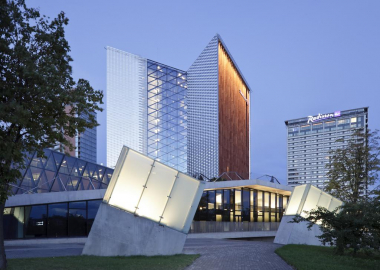
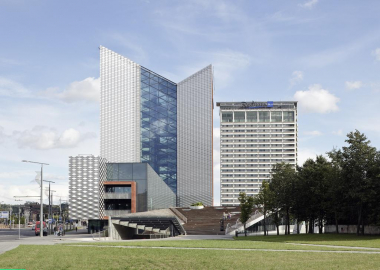
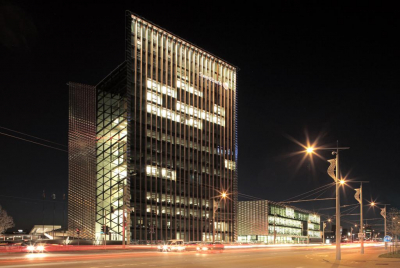
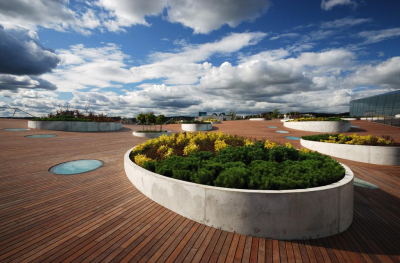
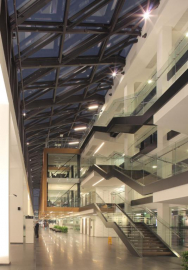
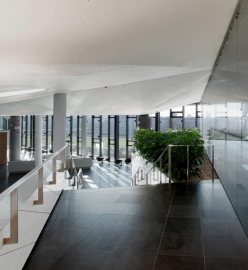
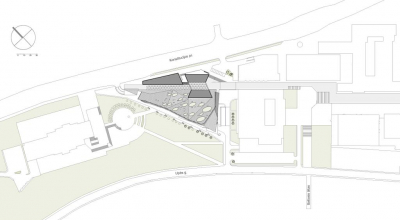
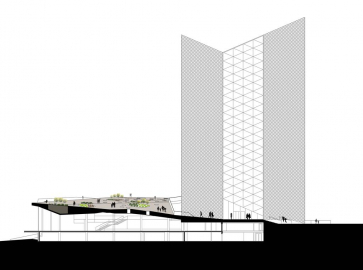
 copy.jpg)
 copy.jpg)